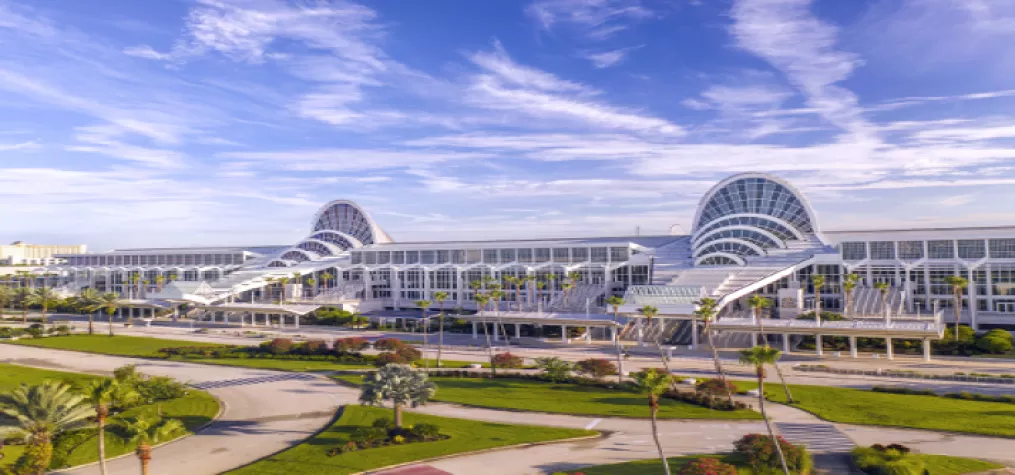Karin Roberts

Karin Roberts is the Director of Marketing for The Tradeshow Network Marketing Group, an exhibit house in Chicago supplying creative island booths, modular and custom rental displays, show services and trade show marketing.

Ever feel that reading a show service manual is like trying to find your way across the Atlantic Ocean without GPS? Trade shows can be overwhelming to say the least.
Managing a trade show display is like hosting a party that lasts several days for a thousand of your closest friends in the space of a small boat.
Although it may seem cliché, planning is the key to success. This guide helps you decipher the secrets behind understanding and following your trade show service manual. It really is possible to successfully manage your booth setup by adhering to the rules and being organized in advance.
What does your target date really mean?
What your show manual says:
Show management sets a target date for delivery of freight for your exhibit, based on the hall and the area of the show floor where your booth space is located. A target date is not the date and time that your freight will appear on the show floor. Your freight arrival is “meant” to coincide with the target date and time, but the show allows itself a lot of leeway with good reason.
Why can’t a set-up time be guaranteed?
The initial set-up plan for your exhibit is based on the freight arriving in a timely manner on the show floor. However, if the show management plans to set up all of Hall C first, because that hall has the earliest target times, and then that hall’s freight gets waylaid, installation moves to the booth spaces that have received their freight. Obviously, it makes good sense to work on installing the exhibits that are already there, rather than waiting for the first hall to be ready. Installation then moves as quickly as possible to the original set-up plan. In that way, everyone gets their exhibits set up in a timely manner.
What do you really need on your electrical order?
The show manual offers a lot of options when it comes to electricity. The main items you need to decide are:
· How much power you need and for how long
· Whether show labor is required
· The number and placement of outlets
When do you need show labor?
If all you are doing is plugging in the lights to your booth, you probably do not need to order show labor. However, labor is required if your lights require wiring, such as lights on a truss, or if you are running any electrical cords under your carpet.
Placement of outlets
Outlets will be located on the floor at the rear drape line of inline or peninsula booths. Island booth outlets are brought to one location and then distributed from that point. It is important to know if your power is dropped from the ceiling or comes from the floor for placement of your main location.
Electrical order forms required
To ensure that you have electricity when you need it, you must submit the following documents to the electrical contractor or no work will be done:
· A complete Electrical Order Form with payment
· A complete Labor Order Form with credit card information completed.
· A floor plan that notes the “one main” power source, all other outlet locations and your booth orientation (fill in surrounding booth numbers). Make certain the floor plan is to scale or that each location has exact measurements.
How much more can this possibly cost?
Just when you think you have a handle on what your trade show exhibit will cost, you discover the fine print in the show manual about additional charges. Some added onsite charges are unavoidable, whether you rent your exhibit from an outside contractor, the show contractor, or even bring your own booth to the show.
Drayage charges: The handling of freight and product from the door to the floor is not included in either your booth space purchase or your display rental quote and is the exhibitor’s responsibility.
Electrical charges: The exhibitor is responsible for paying for electric usage and electrical services that require labor, which vary depending on the venue, such as electrical drops or hanging lights on a truss. You must have a credit card on file with the show in order for electrical services to be “turned on.”
Additional charges: Items like hanging banners, installing telephones, modems and faxes (which require outside lines different than regular phone service), plants, water and beverage services, all cost extra. If your booth needs to be reconfigured after it has been erected, you will also incur added labor charges. It costs even more if you order these items late from the onsite contractors.
Get organized to stop the money outflow!
A trade show exhibit involves organizing seemingly endless details, but when you prepare in advance, you’re likely to save money and headaches.
Know your exhibit requirements.
· For every show, know all your deadline dates and regularly consult the show’s Quick Facts to keep you on track. It’s best to put everything on a calendar!
· Double-check your booth space and number and hall name and venue.
· Get to know the show floor map: where your booth will be, the anticipated flow of traffic and any obstacles in your way.
· Check the ceiling height and restrictions. Will your booth or banner fit? Is it allowed? Some sites have ceilings that dip and jut skyward in different areas so it pays to avoid surprises on the show floor.
· If the show requires prior booth design approval, be sure to submit your design well in advance so you can make any needed changes before your exhibit is shipped.
Prepare for the set-up.
Electrical orders: Order your electrical needs early from the show site contractor - late orders are very expensive and tend to get lost. Your installation team should have the full electrical schematic available to check before they lay the carpet. Incorrect placement of electric drops is the #1 cause of I&D delays and cost overruns!
Graphic layout information: If the graphics are not “just right” when the exhibitor arrives after set-up, prepare for hassles. To avoid problems, include clear graphic placement instructions with the booth.
Booth set-up photos: In addition to updated Instructions, electrical and graphic layouts, and all CAD drawings, include set-up photos from either your warehouse preview or your most recent show. This will help ensure that the final exhibit looks exactly like you remember it and expect it to be.
Order confirmations: On the show floor, your installation team should have copies of all show-service order confirmations for services such as electrical, carpet rental, internet, furniture, A/V rental, and rigging labor. Request that show labor be done on straight time, if possible.
Extra keys: To avoid damaging cabinets or meeting room doors, we recommend shipping multiple sets of keys for the exhibit’s various locks (storage room, reception station, demo tables).
Extra light bulbs: If light bulbs burn out during the show, you can avoid the hassle and perhaps a labor call-back charge by having extra bulbs on hand for the exhibitor or supervisor to install.
Organize return shipping.
Provide freight carrier information.
It seems simple enough, but the carrier name and method of return shipment is information that is often omitted. Surveys show that not having outbound freight carrier information on hand is the #1 cause of forced freight in the trade show industry.
Number and inventory crates.
To minimize installation and dismantle labor costs, number your crates according to content, attach a diagram with instructions for exhibit set-up and include electrical requirements and repacking instructions.
Negotiate fees with the carrier.
If you exhibit in multiple shows, use the same freight carrier and negotiate volume discounts.
File your credit card information.
If money makes the world go round, then credit card information keeps trade show services moving. The general contractor should have the exhibitor’s credit card info on file already, but if your installation team is armed with a copy of that completed form, they can help you avoid costly delays — and show services can be completed with less fuss.
Share your cell number in case of emergency.
Let’s face it. The worst-case scenario is entirely possible: damaged graphics, missing or late freight, layout questions, or show services problems. If your installation team needs to consult with you, make sure they have your cell phone number. There are always solutions, but not if you’re unreachable.
Enjoy the adventure!
Once you have learned how to navigate the trade show exhibit world, it’s time go out there and make a splash! When all of your efforts bring in new leads for your sales team, help launch a new product, and contribute to your company’s growth, your entire team will be on board.

Add new comment